2017 milk foam detailed tutorial illustration sharing
The most important link in the coffee flower can be said to be the dismissal of milk foam, even if you have a superb flower pull technique, in the face of a jar of dregs milk foam, it is difficult to create a delightful pattern. In addition, many coffee lovers who are attracted by pull flowers are also stuck in the step of making milk foam, and many people give up their interest in drawing flowers because of this.
The video brought to you this time is revolving, which is more suitable for friends who can't find the feeling of milking at the beginning. It is not the only way to milk, and its theory is not necessarily suitable for other ways.
1 the position of the steam rod
Everything is difficult at the beginning, we have to grasp the position of the steam stick when we dispose of the milk, so that we can get twice the result with half the effort.
As we can see in the video, in fact, many people are used to putting the steam stick in the 2-3 o'clock or 9-10:00 direction of the milk tank (with the nozzle as the 12:00 direction). Why?
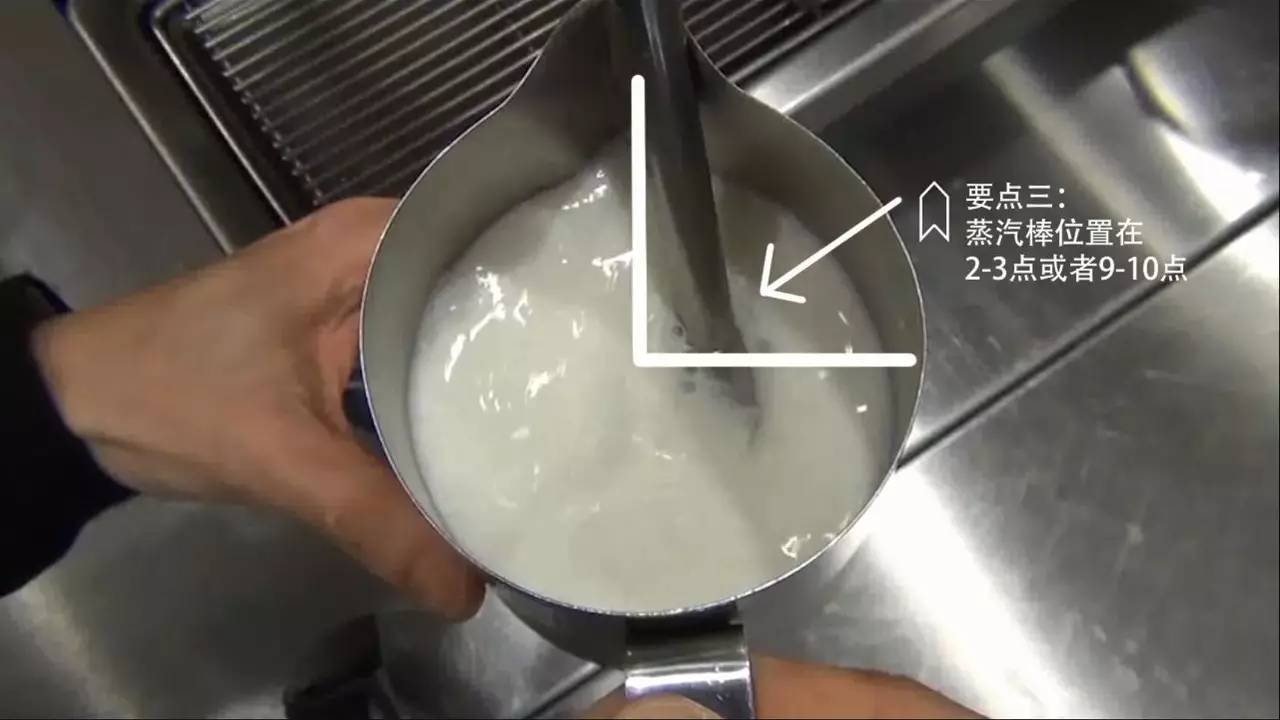
In fact, if we think about it deeply, we can understand that when we dispose of the milk, we should use steam to make it spin as soon as possible and form a small whirlpool. In this way, the thicker milk bubbles can be involved in the milk, so that the milk has a dense state after being sent away.
2 find the angle of the steam rod
In addition to placing the correct position of the steam rod, the angle between the steam rod and the liquid level is also very important. The steam bar is too vertical, most of the steam is ejected downward, it is difficult to make the milk form a small whirlpool; if the steam rod is too flat, most of the steam will be ejected in a parallel direction, making the small vortex too large to form turbulence that is difficult to control or milk spill.
So how do we find the angle of our steam stick?
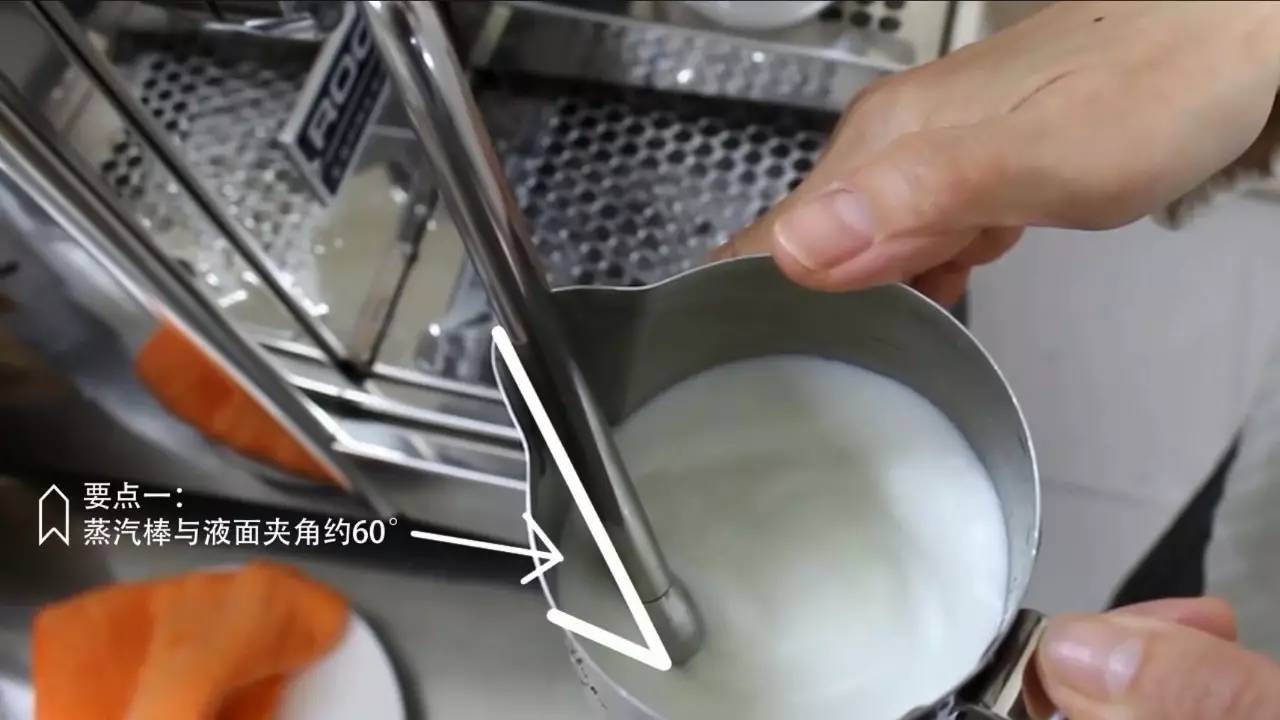
First of all, we can make the steam rod form 60 °with the liquid surface, try to dispense the milk, and observe the formation of the small whirlpool. If the small vortex is formed very quickly, the steam rod should be adjusted vertically (for example, 70 °); if the small vortex is formed very slowly or even without the formation of the small vortex, we should reduce the angle between the steam rod and the liquid level. Make the steam emitted by the steam rod flatter (e.g. 50 °). Finally, I gradually found the steam bar angle of my coffee machine.
3 the depth of the steam rod is about 1cm below the liquid level.
Put the steam rod in the right position and angle, and then we should talk about depth. The depth of the steam rod determines the air intake speed of the milk. at the same position and angle, the shallower the steam rod is, the faster the milk air intake is, and vice versa.
Under the same conditions, the deeper the steam stick is placed, the more difficult it is for the milk to form a small whirlpool, while the shallower it is, the easier it is to form a small whirlpool.
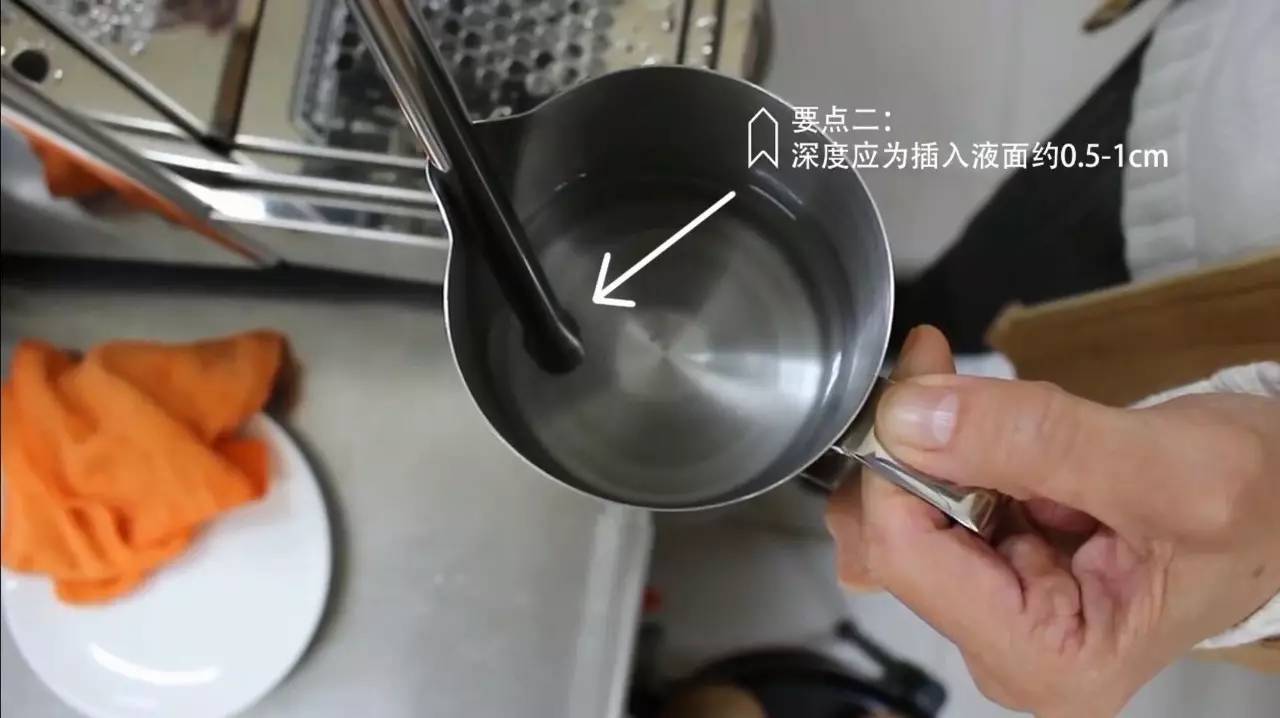
Teachers usually ask students to insert steam sticks into milk about 1cm, which is a common depth, but when it comes to coffee machines with different steam intensities, this is just a suggestion.
We can use 1cm as the standard, if the coffee machine steam is too strong, the vortex is too large or turbulence, we can put the steam stick into a deeper position (such as 1.5cm); if the coffee machine steam is not strong enough, we can put the steam stick in a shallow position (such as 0.5cm or shallower). So that the milk can form a small whirlpool as soon as possible without spinning too violently or causing turbulence.
4 steps of foaming
After doing the above three points, we can try to get rid of the foam and turn on the steam, and then we will hear the cutting sound of "cici". If there is no "cici" sound, it is likely that the steam rod is too deep and can be slightly moved down to pull the vat, because with the injection of gas, the milk level will begin to rise and a small whirlpool will be formed.
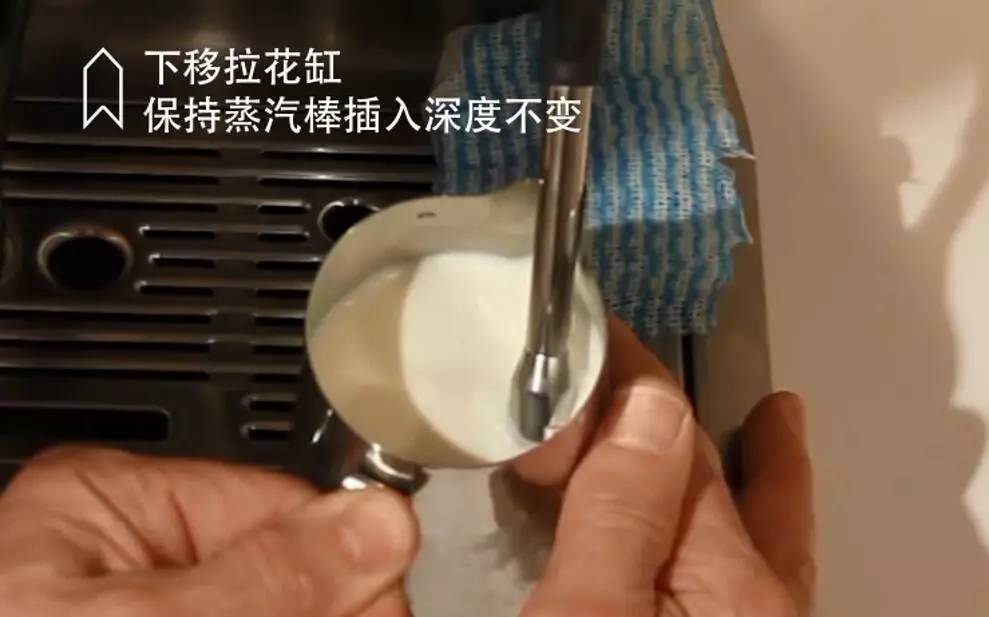
In the process of rising the liquid level, we need to keep the depth of the steam stick inserted into the milk to keep the milk foaming, while the small whirlpool will pull the rough foam under the liquid surface.
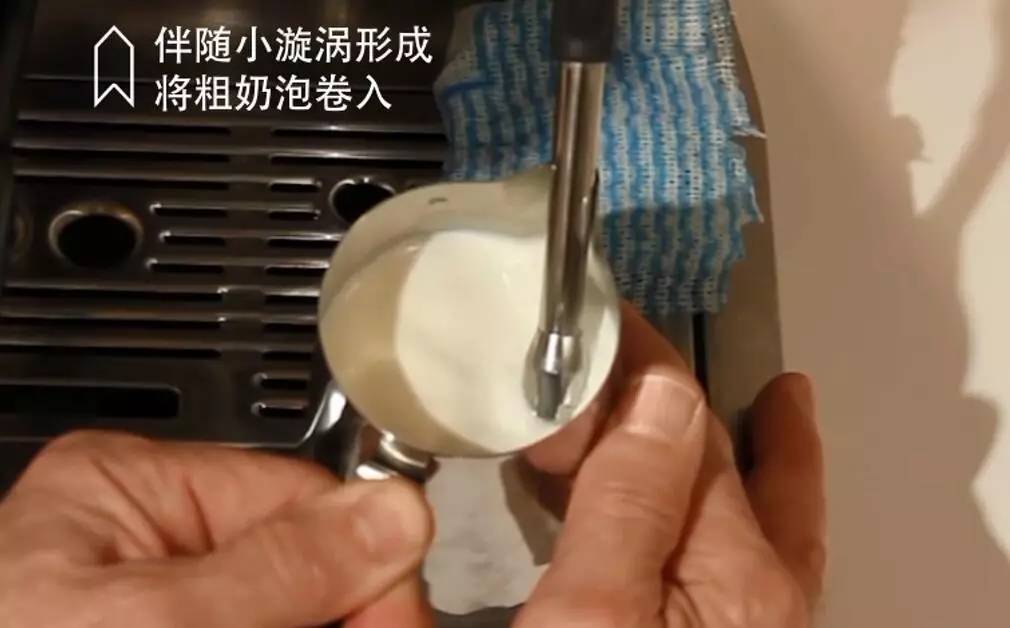
After the foaming amount is enough, we slightly raise the milk tank and insert the steam stick deeper into the milk to stop foaming. When the temperature reaches about 55-65 ℃ (the palms begin to feel hot), turn off the steam, and a jar of dense foam will be finished!
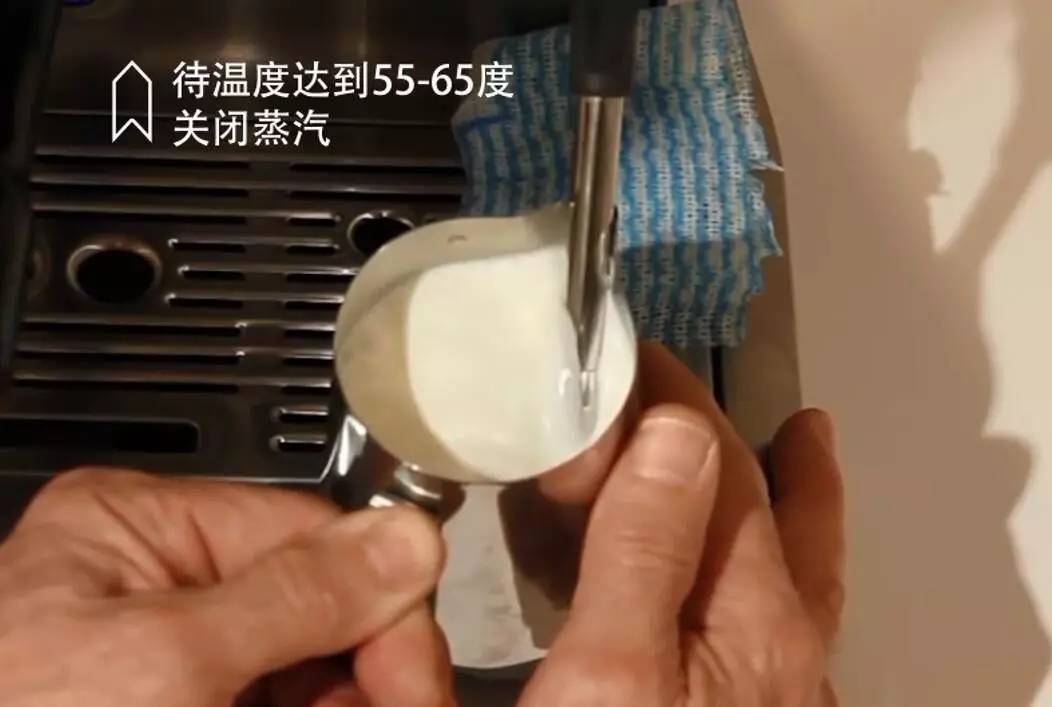
Warm Tip: everyone has different feelings about the temperature. You can refer to the temperature with the help of a thermometer when practicing.
Important Notice :
前街咖啡 FrontStreet Coffee has moved to new addredd:
FrontStreet Coffee Address: 315,Donghua East Road,GuangZhou
Tel:020 38364473
- Prev

How do humans create coffee? Why would you do that?
How do humans create coffee? Why would you do that? How did we get this far in coffee competitions around the world and an industry that exports 30 billion dollars a year? In addition, how did the first, second, third or even fourth wave of coffee come from? If you have ever thought about these questions, please be prepared. Lao WA will take you from the 14th century. It's easy.
- Next
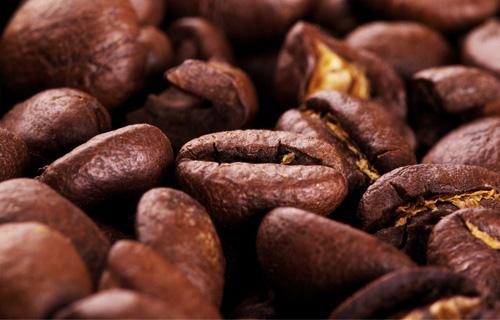
The most common 11 species of coffee beans
Following Kaiping (official Wechat account vdailycom) found that Beautiful Cafe opened a small shop of its own many years ago, a goat found a coffee tree in Abyssinia, Ethiopia. The shepherd Khaldi noticed that his goat became very excited after eating the berries on the tree. He also gave it a try, and this is the origin of coffee. No matter this story,
Related
- Beginners will see the "Coffee pull flower" guide!
- What is the difference between ice blog purified milk and ordinary milk coffee?
- Why is the Philippines the largest producer of crops in Liberia?
- For coffee extraction, should the fine powder be retained?
- How does extracted espresso fill pressed powder? How much strength does it take to press the powder?
- How to make jasmine cold extract coffee? Is the jasmine + latte good?
- Will this little toy really make the coffee taste better? How does Lily Drip affect coffee extraction?
- Will the action of slapping the filter cup also affect coffee extraction?
- What's the difference between powder-to-water ratio and powder-to-liquid ratio?
- What is the Ethiopian local species? What does it have to do with Heirloom native species?

